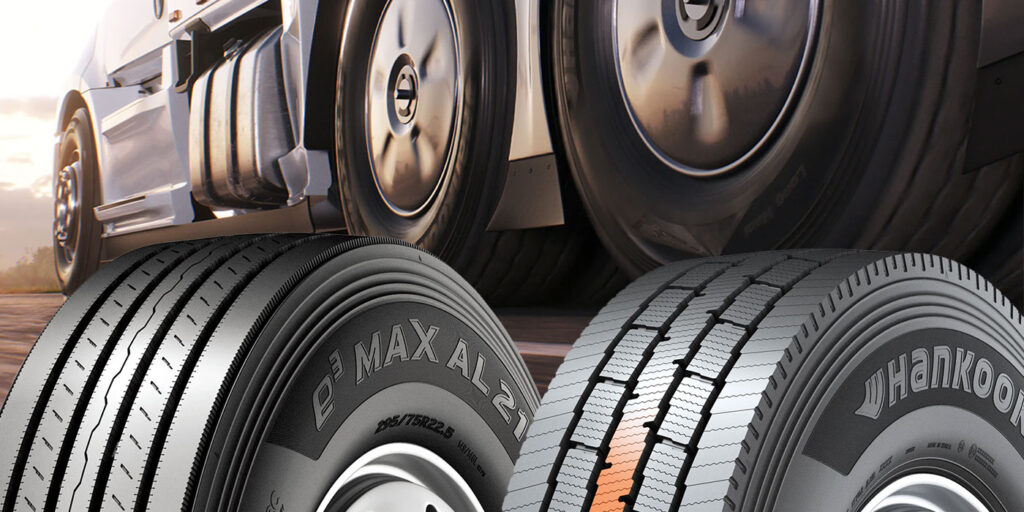The current landscape around commercial trucking is perhaps the most tumultuous it has been in decades and, perhaps, our lifetime. In a year that has seen diesel prices skyrocket by 55% in as little as six months, sustained volatility and uncertainty across the supply chains have fueled greater anxieties surrounding potential fuel scarcity and the resulting ripple effect it would bring to other diesel-dependent industries.
Despite the apparent challenges, according to the old adage, “victory comes from finding opportunities in problems.” This should motivate us all in the tire industry to rethink our products and strive towards new innovations and beneficial technologies that can increase efficiencies.
There will always be challenges when undertaking and embracing new disruptive technologies. However, by creating a strong approach to manufacturing and leveraging the latest in data and analytics, the industry can, quite literally, reinvent the wheel or in this case, the tires.
Embracing a manufacturing ethos
All major tire manufacturers offer a wide range of solutions to meet the demands of different road environments and customer needs. While conditions and stress (temperature, distance, terrain, weight, etc.) vary considerably, maintaining a consistent manufacturing approach ensures that quality and performance are never compromised.
Whether it be a long-haul position tire or a regional all-position steer product, applying the same methodology throughout conceptual, testing, development and final production phases enable various tires to meet and even exceed industry benchmarks and secure SmartWay certification. Such approval represents an important commitment to provide products that are sustainably developed and proven to support commercial fleets and independent owners.
Support for Truck, Bus and Radial (TBR) customers is further accomplished by engineering better products that reduce fuel consumption by improving rolling resistance and by introducing new alternatives into the segment. For example, by developing singular wide drive position products in favor of dual-tire architectures, weight savings can be as high as 400 lbs. per tractor and reduce rolling resistance by up to 33%. Given that the average fuel capacity of a tank ranges from 125 to 300 gallons, that next tank can go that much further through better technology that also enables drivers to reduce that cost-per-mile figure as a result.
Big data for big tires
Our world and roads continue to be met with new connectivity structures and opportunities, and commercial trucking is no different. As big data and artificial intelligence grow in adoption across all industries, fleet management will largely benefit through greater data collection methods and implementation through “smart tires.” Such tires can collect real-time data while driving and immediately provide actionable insights around tread life analysis, tire wear level, abnormal tire behavior, optimal tire maintenance intervals and settings, and real-time alerts to a driver.
However, before products even make it to the tarmac, new digital transformation processes, such as digital twins enable manufacturers to discover newfound opportunities and lessons learned to inform the TBR products of tomorrow. This is an exciting proposition, especially for tire engineering and research departments that can run countless tests and simulations that will, in turn, predict real-world characteristics and allow for further refinement and optimization around fuel efficiency and durability, for example.
The underlying key benefit, outside of developing better products for the road, is efficiency and sustainability. Without the need for physical modeling, manufacturers will be able to significantly reduce associated waste from traditional material production by leveraging newfound predictive analytics capabilities and simulated trial and error. Once more, new modeling techniques and predictive analytics offer significant time savings advantages over previous approaches that require multiple construction phases and quickly become lengthy and unnecessarily complex undertakings.
The road ahead
For nearly three years, our industry has experienced countless challenges. Many elements continue to evolve and take shape as new obstacles will take time to correct. Despite all this turbulence, there are encouraging manufacturing and technology developments already underway.
While the roads of tomorrow remain uncertain, our collective effort and pursuit of new technologies will help prepare for what lies ahead.
Rob Williams is the senior vice president, North America sales, with Hankook Tire America Corp.














